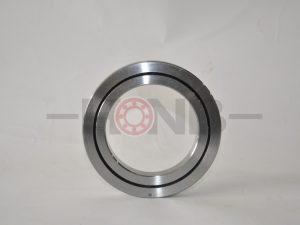Factors Affecting Fatigue Life of Bearing Steel
Author: hongyuanTime:
The comprehensive sign of the internal quality of bearing steel is the fatigue life. Some scholars put forward a point of view: reducing the oxygen content has not yet greatly improved the fatigue life of bearing steel. In fact, only by reducing the content of oxides and sulfides at the same time can the potential of the material be fully tapped and the fatigue life of bearing steel can be greatly improved.
Why can’t reducing the oxygen content improve the fatigue life of bearing steel? Reason for sharing: After the amount of oxide inclusions is reduced, the excess sulfide becomes an unfavorable factor affecting the fatigue life of steel. Only by reducing the content of oxides and sulfides at the same time can the potential of the material be fully tapped and the fatigue life of bearing steel can be greatly improved.
What factors affect the fatigue life of bearing steel? Share as follows:
1. Effect of nitrides on fatigue life
Some scholars have pointed out that when nitrogen is added to steel, the volume fraction of nitrides decreases. This is due to the reduction in the average size of inclusions in steel. Due to technical limitations, there are still a considerable number of inclusion particles smaller than 0.2in. counted. It is precisely the existence of these tiny nitride particles that have a direct impact on the fatigue life of bearing steel. Ti is one of the strongest elements for forming nitrides. It has a small specific gravity and is easy to float. There will also be a part of Ti remaining in the steel to form angular inclusions. Such inclusions are likely to cause local stress concentration and fatigue cracks, so the generation of such inclusions should be controlled.
The test results show that the oxygen content in the steel is reduced to below 20ppm, the nitrogen content is increased, the size, type and distribution of non-metallic inclusions are improved, and the stable inclusions are significantly reduced. Although the number of nitride particles in the steel increases, the particles are very small and distributed in a dispersed state at the grain boundary or within the grain, which becomes a favorable factor, which makes the strength and toughness of the bearing steel well matched, and greatly increases the hardness and strength of the steel. , especially the improvement effect of contact fatigue life exists objectively.
2. Effect of oxides on fatigue life
Oxygen content in steel is an important factor affecting the material. The lower the oxygen content, the higher the purity and the longer the corresponding rated life. Oxygen content in steel is closely related to oxides. During the solidification process of molten steel, oxygen dissolved in aluminum, calcium, silicon and other elements forms oxides. The oxide inclusion content is a function of oxygen. As the oxygen content decreases, the oxide inclusions will decrease; the nitrogen content, like the oxygen content, also has a functional relationship with the nitride, but because the oxide is more dispersed in the steel, it plays the same role as the fulcrum of the carbide , so there is no damage to the fatigue life of the steel.
Due to the existence of oxides, steel destroys the continuity of the metal matrix, and because the expansion coefficient of oxides is smaller than that of the bearing steel matrix, when subjected to alternating stress, it is easy to produce stress concentration and become the birthplace of metal fatigue. Most of the stress concentration occurs between the oxide, point-like inclusions and the matrix. When the stress is large enough, cracks will be generated and rapidly expanded and destroyed. The lower the plasticity of the inclusions and the sharper the shape, the greater the stress concentration.
3. Effect of sulfide on fatigue life
Almost all sulfur content in steel exists in the form of sulfide. As the sulfur content in the steel increases, the sulfide in the steel increases accordingly. However, since the sulfide can well surround the oxide, the influence of the oxide on the fatigue life is reduced, so the influence of the number of inclusions on the fatigue life is not Absolute, related to the nature, size and distribution of inclusions. The more certain inclusions, the lower the fatigue life must be, and other influencing factors must be considered comprehensively. In the bearing steel, the sulfides are finely dispersed and mixed into the oxide inclusions, which are difficult to identify even with metallographic methods. Tests have proved that: on the basis of the original process, increasing the amount of Al plays a positive role in reducing oxides and sulfides. This is because Ca has a fairly strong desulfurization ability. Inclusions have little effect on the strength, but are more harmful to the toughness of the steel, and the degree of damage depends on the strength of the steel.
The fracture process of GCr15 steel is mainly cleavage and quasi-cleavage fracture mechanism according to fracture analysis. Famous expert Xiao Jimei pointed out: Inclusions in steel are a brittle phase, the higher the volume fraction, the lower the toughness; the larger the size of the inclusions, the faster the toughness decreases. For the toughness of cleavage fracture, the smaller the size of the inclusions and the smaller the spacing of the inclusions, the toughness will not decrease but increase instead. If the brittle phases in the grain are arranged densely, the dislocation packing distance can be shortened. Cleavage fracture is not easy to occur, thereby improving the cleavage fracture strength. Someone has done a special test: the two batches of steel A and B belong to the same steel type, but the inclusions contained in each are different.
After heat treatment, the two batches of steel A and B reach the same tensile strength of 95 kg/mm’, and the yield strength of A and B steel is the same. In terms of elongation and area reduction, B steel is slightly lower than A steel and is still qualified. After the fatigue test (rotary bending), it is found that: A steel is a long-life material with a high fatigue limit; B steel is a short-life material with a low fatigue limit. When the cyclic stress of the steel sample is slightly higher than the fatigue limit of steel A, the life of steel B is only 1/10 of that of steel A. The inclusions in A and B steels are all oxides. From the total amount of inclusions, the purity of steel A is worse than that of steel B, but the oxide particles of steel A are of the same size and evenly distributed; steel B contains some large-grained inclusions, and the distribution is not uniform . This fully shows that Mr. Xiao Jimei’s point of view is correct.


We have rich experience on precision bearing manufacturing and are ranked NO.1 in China and NO.3 all over the world.
We can tailor the overall solution for the use of precision bearings.
HONB– Accountability & Innovation
Products
- YRT rotary table bearing
- YRTS rotary table bearing (high speed series)
- YRTM with integral angular measuring system series
- ZKLDF axial angular contact ball bearing series
- RA series crossed roller bearing
- SX series crossed roller bearing
- CRBH series crossed roller bearing
- RE series crossed roller bearing
- RU series crossed roller bearing
- RB series crossed roller bearing
- XR/JXR series crossed taper roller bearing
- Crossed roller bearing
Contact Us

✉️ bearing20@hyzcgroup.com
📞 +86 15236685001





